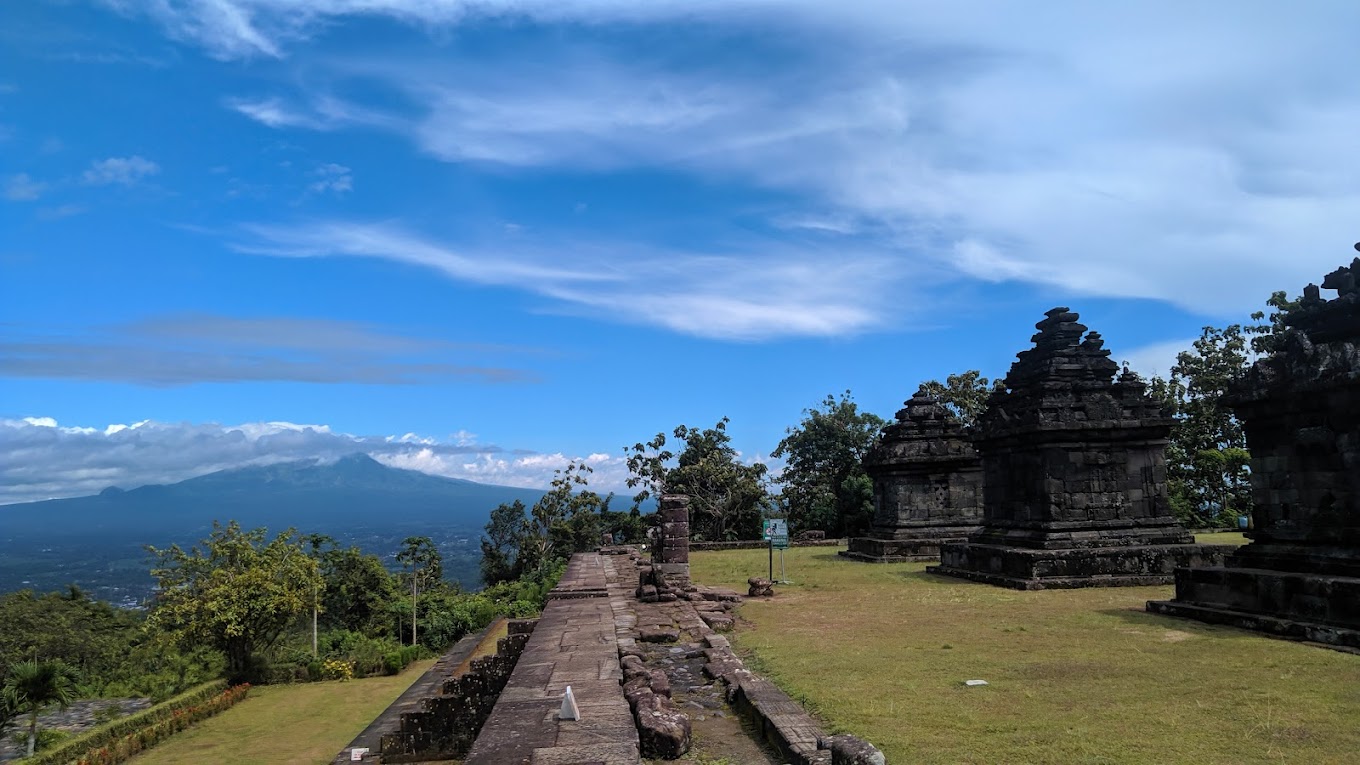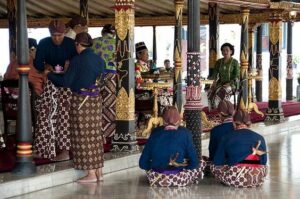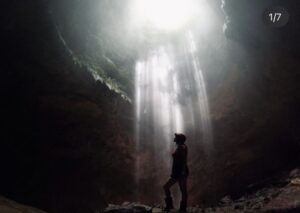Ijo Temple, a historical heritage located in Darungan Hamlet, Sambirejo Village, Prambanan District, Sleman Regency, Yogyakarta, is monumental evidence of the glory of the Ancient Mataram Kingdom which is now one of Jogja’s cultural tourist attractions that should not be missed. With its majestic architecture and rich history, Candi Ijo offers wonder and charm for visitors who want to delve into its glorious past. Want to know more about Ijo Temple? Come on, take a look at the following review!
Origins and History
Ijo Temple, also known as Central Ijo Temple, is thought to have been built in the 9th century AD, during the reign of the Sailendra dynasty, the same as Prambanan Temple and Sambisari Temple. Although Prambanan Temple is not popular, Ijo Temple has very important historical and archaeological value as part of the Hindu-Buddhist temple complex in Yogyakarta. Ijo Temple was founded by Kings Rakai Pikatan and Rakai Kayuwangi from the Ancient Mataram Kingdom. The construction of Ijo Temple is estimated to take around 20 years. Ijo Temple was built as a place of worship for Hindu gods, especially Shiva.
Ijo Temple was rediscovered in 1886 by H.E. Dorrepaal. In 1927, the Dutch East Indies government carried out the first restoration of Ijo Temple. The restoration of Ijo Temple was carried out again in the 1970s by the Indonesian government.
Magnificent Architecture
The architecture of Ijo Temple amazes with its beauty and splendor. Built on a hill, this temple offers stunning views for visitors who want to enjoy the panoramic view of the surrounding nature. Ijo Temple has a main structure consisting of three main temples and three ancillary temples, with a characteristic stupa at the top which is a symbol of spirituality and enlightenment. Ijo Temple has a distinctive architecture with many stupas and kalamakara. The following are some of the architectural characteristics of Ijo Temple:
Temple Complex
Ijo Temple consists of 17 building structures on 11 terraces with the top terrace being the highest position, namely the main temple. The main temple faces West.
Main Temple
The main temple has a square plan with dimensions of 18.43 x 18.45 meters, and a height of 16 meters. The foot of the temple is square with a kalamakara relief above the doorway. The body of the temple is decorated with reliefs that tell Hindu stories, such as the Ramayana and Krishnayana. The roof of the temple is pyramid-shaped and decorated with small stupas.
Stupa
Ijo Temple is decorated with many stupas, both on the roof of the main temple and on other terraces. These stupas symbolize the purity and majesty of Hinduism.
Kalamakara
Ijo Temple is decorated with many kalamakara (giant heads) above the temple entrance. Kalamakara functions to ward off evil spirits and protect the temple from disturbance.
Ornaments
Ijo Temple is decorated with various other ornaments, such as makara (dragon heads), nagas, and bidadari (nymphs). These ornaments add to the architectural beauty of Ijo Temple. Ijo Temple has a distinctive architecture with many stupas and kalamakara. The architecture of Candi Ijo shows the splendor and beauty of Hindu architecture during the Ancient Mataram Kingdom.
Circulating Ijo Temple Stories
The folklore that developed around Candi Ijo features an interesting legend about the relationship between Roro Jonggrang and Prince Bandung Bondowoso, which is an important part of the local cultural heritage. The most famous narrative is the story of Roro Jonggrang and Bandung Bondowoso, which can be summarized as follows:
According to legend, the King of Prambanan, Prabu Baka, died in battle against Bandung Bondowoso, the prince of Pengging. The princess, Roro Jonggrang, has the ambition to avenge her murdered father. In this effort, he devised a plan for Bandung Bondowoso to build 1000 temples in one night as a condition for marriage. Even though he almost succeeded with the help of genie troops, Bandung Bondowoso’s attempt was thwarted by Roro Jonggrang with the help of Ki Ageng Pengging. When the sun rose, only 999 temples were completed, making Bandung Bondowoso angry and cursing Roro Jonggrang into stone, which became known as Candi Ijo.
There is also another version which describes Ijo Temple as proof of Bandung Bondowoso’s love for Roro Jonggrang. However, Roro Jonggrang doesn’t believe it and sets impossible conditions to prove his love. Ijo Temple then became a symbol of sacrifice and disappointment in love.
In the modern version, Roro Jonggrang is depicted as an intelligent woman who fought against the tyranny of Bandung Bondowoso. The requirement to build 1000 temples at night is a strategy to delay time and find a way to beat it. In this context, Ijo Temple has become a symbol of people’s resistance and ingenuity in facing pressure and injustice.
Cultural and Spiritual Heritage
Ijo Temple is not only an archaeological heritage, but also a historical place for religious practices and spiritual rituals. As a place of worship for the Hindu-Buddhist religion, this temple is a silent witness to the religious and cultural life that developed in the past. The reliefs that decorate the temple walls tell epic stories and teachings believed by the people at that time.
Preservation and Restoration
As part of efforts to preserve cultural heritage, Ijo Temple has undergone various restoration and restoration processes to maintain its authenticity and beauty. The government and various related parties continue to strive to ensure that this temple can still be enjoyed by future generations and becomes an inseparable part of Jogja’s cultural identity.
Historical and Cultural Tourism
Ijo Temple offers a unique tourist experience for visitors who want to understand Indonesia’s ancient history and culture. With its strategic location and amazing natural charm, this temple is a favorite destination for local and foreign tourists who want to explore Jogja’s rich cultural heritage.
Ijo Temple, with its ancient yet enchanting charm, provides a clear picture of Indonesia’s rich history and culture. As an inseparable part of Jogja’s cultural heritage, this temple continues to invite us to protect and care for historical heritage in order to preserve the nation’s identity and identity. Through efforts to preserve and develop sustainable tourism, Ijo Temple will continue to be a silent witness to the long journey of human civilization and become an inspiring tourist destination for future generations.
Interested in visiting Ijo Temple and other tourist attractions in the surrounding area? Don’t forget to use Jomblang Cave Tour as your tour service!


![Taman Sari Yogyakarta: 역사, 티켓 가격 및 위치[2023]](https://goajomblang.com/wp-content/uploads/2023/06/Taman-Sari-Yogyakarta-역사-티켓-가격-및-위치2023-300x200.jpg)


